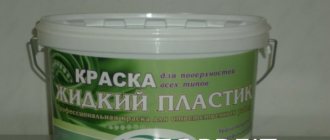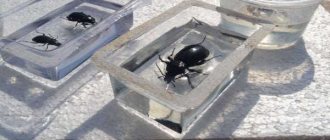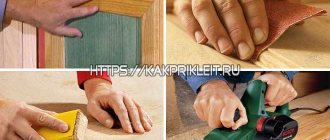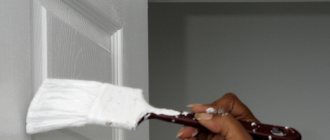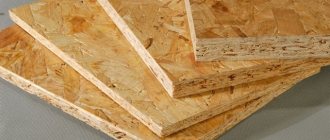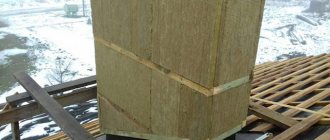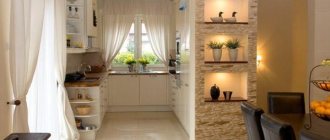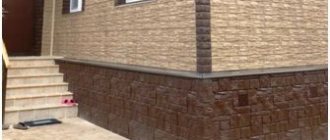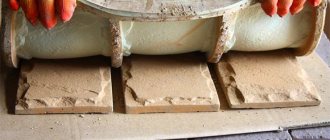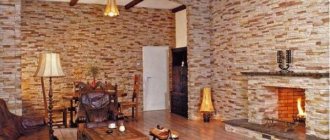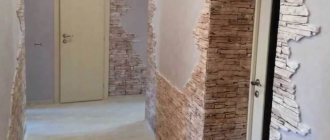Liquid glass for brickwork
Liquid glass is widely used in construction work and during routine repairs. This is explained by the range of qualities of the material, including the ability to waterproof, and the variety of surfaces processed: wood, brick, plaster and concrete. One of its main purposes is protection from moisture, as well as increasing the fire resistance of buildings, structures, and priming brick or concrete foundations.
Video: Liquid glass as protection for a concrete surface
Solutions with liquid glass are used for waterproofing concrete and plastered surfaces, including those that have lost some of their strength after long-term use. When applied, a solution with liquid glass fills pores and cracks, binds the damaged structure and makes surfaces smooth, strengthens and antiseptics. Preparation of solutions with liquid glass requires compliance with a number of rules, and the recipe varies depending on the purpose of the solution. For concrete mixtures: liquid glass additives affect both the physical properties of concrete and rheology - the setting time is sharply reduced, hardening and strength gain are accelerated. Waterproofing of the floor is carried out with liquid glass solutions diluted 1:2 with water - two parts water to one part silicate. The need for such a solution is 0.25-0.30 kg/m2.
What does it represent?
It has another name - silicate glue, because it is an aqueous solution of silicate salts. There are 2 main types depending on the main component:
The substance, due to its chemical composition, has the ability to perfectly fill porous materials.
In its pure form, liquid glass is crystals, white or colorless. In practice, an aqueous solution is used with the consistency of a viscous mass that quickly hardens due to a reaction with carbon dioxide. In construction work, self-made solutions are used based on silicate glue with the addition of water, sand and cement.
Negative and positive sides
The material has many advantages. These include:
This material is considered inexpensive and effective.
- strong adhesion to the surface;
- excellent penetrating ability;
- high moisture resistance;
- low thermal conductivity;
- passivity to most chemicals;
- good anti-corrosion qualities;
- non-toxic;
- antistatic properties;
- low consumption (especially when creating cement mortars;
- low cost.
However, it also has its drawbacks:
- Liquid glass coating cannot be painted or varnished on top.
- The material is quite fragile and susceptible to destruction as a result of mechanical stress.
- To increase the service life, it needs to be combined with other types of waterproofing.
Return to contents
How does it work?
In its basic form it is almost never used during construction work. The following mixtures are prepared on the basis of silicate glue:
| Type of solution | Compound | Application |
| Primer | Cement and silicate glue 1:1, water to give the desired consistency | Intermediate treatment of bases |
| Waterproofing | Sand, liquid glass, cement in equal parts | Creating a moisture barrier |
| Refractory | Sand, cement and silicate glue 3:1:1) for cement floor screed or a separate aqueous solution | Fireproof coating |
| Antiseptic | Liquid glass and water 1:1 | Fungus removal and prevention |
| Strength Improvement Compound | 0.4 kg silicate glue, 1 liter of water | Strengthening the foundations |
| Concrete hydrophobic mortar | A glass of liquid glass and 10 liters of clean water with the addition of dry concrete | Giving concrete waterproofing properties |
This solution must be prepared in small portions.
The mixture should be homogeneous and viscous, without foreign impurities. Due to the rapid hardening, the solution is prepared in small portions, which can be used in approximately 20 minutes. It is necessary to strictly observe the proportions - exceeding the dose of silicate glue will make the structure being processed very fragile.
Recommendations for applying liquid glass
It is recommended to apply any solution to a previously prepared surface. In this case, the adhesion of materials increases significantly.
Prices for liquid glass TEX
When waterproofing the foundation, liquid glass is applied in the following order:
- If liquid glass is used to waterproof a concrete screed or foundation walls, then their surface must first be leveled, dried and cleaned of dust. If liquid glass is applied to a damp screed, it will begin to peel off from the surface.
- Then, liquid glass, diluted to the required state, is applied to the surface of its walls (floor) using a roller. The solution must be distributed evenly over the surface, without leaving untreated “islands”.
- If you plan to strengthen the concrete to a depth of three millimeters, then a spray gun, roller or wide brush is used to apply the composition. In this case, the solution is applied in one layer.
- If the concrete surface needs deeper impregnation (and this is the best thing to do), then the silicate solution will have to be applied to the surface in three layers. After the first layer has been absorbed and dried, it is necessary to apply a second and, if necessary, a third layer of solution. Each of them must dry for at least 30 minutes.
- When the silicate impregnation has completely dried, you can begin insulating the foundation.
Waterproofing impregnation of screed and concrete foundation with liquid glass
If the previous layer was applied as a waterproofing primer, then the next stage is the application of a protective concrete layer, also containing liquid glass. The solution for it is prepared from sand and cement, to which a silicate composition is added. The components are taken in a ratio of 3:1:1 or 3:1:0.7. The procedure for mixing the solution does not differ from that described above.
Exposed beacons for subsequent installation of leveling waterproofing screed.
- To make the coating even, beacons made of metal guides are placed on the surface of the primed base, which are adjusted according to the level. The height of the beacons will correspond to the thickness of the leveling layer. It is also advisable to make slides for fixing beacons from the same cement sand mortar with a silicate additive. It will set quickly, so you won't have to wait long.
Leveling concrete-silicate mortar along beacons
- The concrete-silicate layer can have a thickness of 30÷50 mm. The solution is applied above the installed beacons and leveled using a construction rule or a wide spatula.
The solution should be prepared in portions so that it does not have time to set before it is leveled. Well, when distributing the solution you will have to show some skill.
Liquid glass and brick
The treatment of brick with this substance is prohibited in the instructions for its use due to the fact that the solution contributes to the destruction of the masonry. But the property of the material to dry quickly allows it to be applied to brick surfaces evenly, in small portions. The fireproof properties of silicate glue help to cover fireplaces, stoves and chimney pipes with the mixture. Leaks must be removed quickly. To seal cracks and seams on a foundation made of brick or concrete blocks, a solution with the addition of sodium silicate is used:
Features of waterproofing with liquid glass
Silicate adhesive is attractive to consumers not only for its relatively low cost, but also for its high strength and moisture resistance. In addition, it is able to resist chemical and mechanical influences. Liquid glass can be used for waterproofing, for example, a bathroom, since it has mostly only positive reviews.
How to choose?
When choosing liquid glass for waterproofing and other applications, you must carefully familiarize yourself with its composition. There are 2 types:
| Glass type | Mode of application |
| Sodium | Base reinforcement |
| Mold casting | |
| Fireproof treatment | |
| Potassium | Exterior painting work |
| Use in fire-resistant and silicate paints | |
| Protection of surfaces in chemically aggressive environments |
The potassium composition of the product is more often used for external painting work.
The properties of the potassium composition are similar to sodium, however, it does not give reflections on the treated surface, and is also impervious to weather influences and acid exposure. This option is more expensive, but has higher technical qualities. When purchasing, pay attention to the packaging. It must be tight and hermetically sealed, since the glass quickly hardens due to air entry. The substance is stored for up to 12 months at any temperature.
Preparation of the solution
First of all, you need to mix all the dry ingredients. After mixing thoroughly, you need to add silicate glue or its solution. Then you should mix again. After 3-5 minutes, the freshly prepared mixture should look like a homogeneous plastic mass. Adding liquid or additional additives to it is strictly prohibited.
Depending on the goals and recommendations on the packaging, the proportions may vary. But there is a ratio for a universal waterproofing mortar: ten liters of cement mortar must be combined with one liter of silicate glue.
Application
In construction, liquid glass is used to:
- waterproofing the surfaces of buildings, wells, swimming pools;
- antiseptic treatment;
- Giving surfaces fire-resistant qualities.
In everyday life it is used for the following work:
- laying linoleum;
- production of putties for sealing pipes;
- impregnation of materials to enhance their fire-fighting capabilities;
- covering up cuts and damage on trees;
- use as glue;
- production of self-leveling floors in 3D format;
- decorating different surfaces;
- polishing of automobile bodies.
Return to contents
Protection of external walls made of silicate brick.
The building made of sand-lime brick is located in the Moscow region. A wall made of such material absorbs moisture very well during heavy rains, and in winter, under the influence of frost, gradual destruction occurs (pieces of brick peel off). It would be possible to plaster the outside, but I would like to - firstly, leave the texture of the wall unchanged (not cover the brickwork with a “fur coat”) - and secondly, so that all measures to protect it would be as cheap as possible and at the same time quite functional.
Why do you need liquid glass: secrets of use and scope of application?
The modern building materials market is replete with all kinds of mixtures containing complex active additives. However, among all this there are materials that have remained popular for centuries, for example, liquid glass is one of them. It is used everywhere in construction, and sometimes there is nothing to replace it with. One of the advantages is low cost, which is also a factor of choice for millions of builders around the world. Anyone who wants to become a construction professional must know how to use it.
Liquid glass: history and composition
You may not know what liquid glass is, but everyone has used it. At least once you have had to use silicate glue. It is sold at any office supply store. But this is what it is. The amazing thing is that more than two hundred years ago people developed a composition that has not changed to this day. And the birthplace of the invention is Germany. The chemist Jan Nepomuk von Fuchs lived there, who studied silicates and their properties. It was he who mixed alkali silicate with silicic acid.
As a result of the reaction, setting of the mixture was observed. The result is the formation of a viscous substance. But if it is left in the open air, it forms a solid substance similar to glass, as it remains transparent. However, the production process looks more complicated, because additional components have to be obtained. They are not found in nature in their pure form. It was necessary to heat the quartz sand until it completely melted. Glass melting furnaces were used. But then coal and soda (sodium sulfate) were added.
The composition of liquid glass is still unchanged. However, the stoves have become improved. Now this is an autoclave, where the boiling point of the substance is higher, which allows for better characteristics of the finished product. But the main thing is that two centuries later this technology still works, and there is no point in replacing it with another, more expensive one. Liquid glass is a material used not only in construction. There are a lot of industries where it is necessary to improve the quality of their products, and it perfectly allows this to be done with virtually no increase in cost.
Tips for choosing liquid glass
There are many manufacturers presenting their products in construction stores. In principle, there is practically no difference in the proposed compositions of liquid glass manufactured in factory conditions. And it’s difficult to single out any company—in fact, you can choose any option. However, you probably shouldn’t give preference to a product whose manufacturer is “embarrassed” to indicate its name and legal address. And this happens sometimes. It would be prudent to refrain from purchasing such products, even if they are attractive due to their low cost. In this case, there is no guarantee that this is not an ordinary counterfeit, which was made without adherence to technology and in violation of proportions. And ultimately, low-quality silicate glue will certainly negatively affect the result of the work.
Characteristics of liquid glass
There is a whole list of advantages of this material. The list includes:
- Hydrophobicity.
After hardening, it is not afraid of water. Therefore, the treated surfaces are not susceptible to moisture, corrosion, or rotting. - Antistatic
. Being solid it does not become electrified. If you apply the mixture to the surface of the part, it will acquire antistatic properties. - Thermal insulation. Low thermal conductivity is the reason for the unique property of retaining heat. Therefore, liquid glass is often added to the mortar (masonry, for screed).
- Fire resistance. This is the ability to neutralize the effects of high temperatures. The material itself does not burn, is non-toxic, chemically neutral, and environmentally friendly.
- Antiseptic. It is truly antiseptic. In a liquid state, the mixture kills parasites and prevents them from appearing during the life of the structure.
Among the areas of use of liquid glass, application in construction and industry is determined by the ability to fill unwanted voids. Sinks, cracks, sinuses filled with silicate do not increase over time, do not accumulate water, and as a result, the monolith retains its frost resistance when it comes to a concrete surface.
Characteristics and application of the material
The versatility of the product is due to the mass of functions that liquid glass performs in construction (and not only), in particular:
- repels moisture, eliminating the negative effects of water on building materials, thus acting as a hydrophobic insulator;
- destroys bacteria, fungi and mold, prevents their proliferation, being an excellent antiseptic;
- used to fill pores on various surfaces;
- neutralizes static electricity, acting as an antistatic agent;
- serves as a thermal insulator and ensures fire resistance of the material.
Important! Liquid glass is not recommended to be applied to brick, since the composition of the product has a destructive effect on the porous structure of the brick surface.
Liquid glass is an indispensable material in construction.
The wide range of applications of liquid glass and its functionality are due to a number of specific characteristics:
- ease of penetration of the material into microscopic cracks and pores, their complete filling, making it easy to apply to concrete and wooden surfaces;
- minimal material consumption and low cost compared to other waterproofing products;
- long service life, starting from five years;
- high moisture resistance;
- degree of protection depending on the number of layers of impregnation;
- the applied solution forms a highly reliable waterproofing layer.
Use of RC in construction
Due to its high adhesion, glass is increasingly used in the construction industry:
- For waterproofing basements, attics and foundations. It protects concrete from high humidity, ultraviolet radiation and fire.
- For waterproofing wells, wells and swimming pools. In places where the concrete surface comes into direct contact with water, the material provides reliable protection against destruction and deformation. The solution is applied in a thin layer in several stages to the inside of the walls of hydraulic structures.
- For laying heating equipment - fireplaces and stoves. The solution is prepared with the addition of refractory cement and sand.
- For the production of decorative materials - putties, water repellents, coloring and adhesive compositions.
- For the production of antiseptic compositions used in the treatment of concrete and wooden bases.
- For the production of protective solutions used in the treatment of connecting joints in sewer and water pipes.
- For the production of durable wood paints that are resistant to moisture and high temperatures.
Types of liquid glass
Fundamentally, the composition can differ only in the additive introduced, which is made on the basis of sodium, potassium or lithium. Accordingly, three different types of products are distinguished. The properties of liquid glass (potassium K2O(SiO2)n, sodium Na2O(SiO2)n, lithium Li2O(SiO2)n) are different. Lithium is rarely used.
The first two types are the main ones. They can be found on the shelves of construction markets. They are used in construction and even in everyday life. Therefore, it is necessary to consider these types in more detail, and learn to recognize in which cases one or another connection is required.
Liquid sodium glass
With this composition, the substance has increased viscosity. Visually, it is distinguished by a faint grayish tint without visible inclusions. Due to its astringent properties, one of the areas of application is the production of various adhesives that are used to organize waterproofing coatings. Every professional builder knows how to work with liquid glass. And, if you need to additionally protect the structure from moisture and water, this material is irreplaceable. Moreover, the reinforced concrete structure becomes fireproof and its strength increases.
Liquid potassium glass
This type would be an excellent alternative, if not for the higher cost of production. The mixture is also viscous, viscous, sticky. Only now it has a barely noticeable greenish tint. The cost increases due to the complexity of working with potassium compounds. On the other hand, this composition has excellent bactericidal properties. The material is not a favorable environment for the growth of fungi, mold, and bacteria. In addition, due to its chemical neutrality, the use of liquid glass in construction is due to the need to protect structures from rain, exposure to aggressive environments, fog, dew, etc. Paint and varnish products with this component are distinguished by a special gloss and shine.
Preparation of solutions based on liquid glass
Having decided what glass is in liquid form, you can consider options for preparing the most popular solutions based on it.
Primer solution
A primer mixture can be prepared from liquid glass for treating various types of substrates. To do this, the following proportions are observed:
- 2 parts cement;
- 2 pieces of glass.
The required amount of water is added to the cement, then glass is introduced. The ingredients are mixed with a construction mixer until a viscous mixture is obtained. How long does it take for the finished mixture to dry? The curing time is 35 minutes, so surface treatment begins after preparing the mixture. For application use a soft brush or roller.
Waterproofing agent
To protect the surface from increased moisture, mold and mildew, it is recommended to prepare a waterproofing mixture. For this, an equal amount of ingredients is used:
- 3 parts sand;
- 3 parts Portland cement;
- 3 pieces of glass.
The ingredients must be diluted with water to obtain a thick mixture. The finished solution is suitable for insulating hydraulic structures.
Application area
It is absolutely natural that such a wide range of dignity has found application in various spheres of human activity. Now liquid glass has found widespread use in the following areas:
- Ferrous metallurgy.
For example, ceramic fluxes and casting molds are made. Electrodes for electric welding are treated with silicate. And in the production of alloys, liquid glass is a binding component. - Mechanical engineering. A non-stick paint coating is often required. Delicate connections are also achieved with this adhesive. Paint on liquid glass forms an anti-carbon layer on the surface.
- Construction sector. They produce heat-resistant materials (concrete and mortars), zeolites and catalysts.
- Chemical production. Varnishes and paints are just the tip of the iceberg. Even washing powder contains this component, as do most cleaning products and detergents. And structures operating in an acidic environment require additional protection, which is also provided by silicates.
- Pulp and paper production. In this case, the use of silicate is necessary for gluing, as well as the production of glossy smooth paper.
The use of liquid glass in everyday life does not only involve the use of silicate glue for paper sheets. When making repairs, anyone who wants to give structures additional strength, moisture resistance, bacterial safety, and heat resistance must buy this component.
Applications in construction
If we talk about specific stages of construction, liquid glass is used for the following types of work:
- Waterproofing of underground communications (tunnels, wells). You can protect the basement and ground floor from moisture.
- Protection of the foundation from groundwater if it is shallow.
- Organization of waterproofing of ceilings and external walls.
- Laying decorative coverings – ceramic and tiles.
- Construction of a swimming pool, artificial pond, reservoir.
- Grouting joints between brick, stone, porcelain stoneware, and facing tiles.
- Insulation of drinking water wells. Fungus and mold do not appear.
Even a blind area around a house or a path on a personal plot will last 8-10 years longer, since the solution will gain water protection, which will cause increased frost resistance.
When liquid glass is used for masonry, the method of application is that, provided that the correct proportions are maintained, it is introduced into the composition of the masonry cement-sand mortar. Then, even with strong heating, as is the case with fireplace masonry, the seams will not crack.
Remember the main thing
Liquid glass produces a film on surfaces that does not wash away in water, does not emit toxins, and does not react to chemicals. It is used in the manufacture of durable paints, bricks with heat-resistant properties, and molds for enterprises involved in metal castings. Liquid glass is used in factories to make soap.
In everyday life it is used for waterproofing the walls of buildings, swimming pools, and wells.
When purchasing it, you need to choose dense packaging. It must be hermetically sealed. Otherwise, when air enters, the glass begins to harden. The product can be stored for up to 1 year even in severe frosts.
When using liquid glass for bricks, its consumption is very low. The material is affordable. It is used on concrete or plastered surfaces. It is not recommended to use it when working with brick. Liquid glass is used for sealing pipes and when repairing furniture. Gardeners use it to treat cutting areas on trees. Before covering the walls of an apartment with glass wallpaper, it is useful to treat them with a glass solution. The main thing in this matter is to choose the most correct composition.
Application in building mixtures
Concrete and mortars containing this component are very popular. Cement-sand mixture can be used for the following types of general construction work:
- Treatment of load-bearing structures, partitions, floors and ceilings on floors located at minus elevation.
- Construction of the foundation, basement floor of buildings located on a site near water bodies or where groundwater lies at a shallow depth.
- Construction of structures operated in conditions of high humidity: baths, saunas, swimming pools, artificial reservoirs.
Also, due to the characteristics of liquid glass, it is successfully used for laying out and lining chimneys. It is not afraid of high temperatures. The solution does not crack, the pipe does not crumble, or crack.
Basic information about the material
The properties of an aqueous-alkaline solution of potassium silicate make this material universal in use
Liquid potassium glass is the commercial name for an aqueous-alkaline solution of potassium or sodium silicate. The material, when applied in a thin layer and partially dries, forms a gelatinous gel-like coating. When completely dry, the substance forms a transparent hydrophobic sodium coating, which crumbles or becomes chipped under mechanical stress.
If the instructions for use are followed, potassium glass makes concrete waterproof
Silicate glue dissolves well in water, forming solutions with varying degrees of viscosity. A solution with a low degree of viscosity has high absorbency. Such means are widely used in construction.
Recently, many car enthusiasts have been using a special composition, which is mistakenly called liquid glass, to enhance the shine of the body paint. In fact, body coating has nothing in common with silicate adhesive
How to use aqueous alkaline solutions of sodium silicate
| Illustrations | Methods of application |
| |
| |
| |
| |
| |
| |
| |
| |
| |
|
Using such glue, you can be sure that it will not mold under the linoleum, as often happens with Bustilat or PVA glue.
Recommendations for application
- Before applying the product, the surface to be treated is thoroughly cleaned of contaminants that may reduce absorbency;
- Surfaces treated with silicate solution must dry for at least 24 hours;
- When applying the product in several layers, we take a mandatory break to dry each previous layer;
- Even after drying, the silicate crust crumbles easily, so you should not drag heavy furniture or heavy metal objects with sharp edges across the prepared floor;
- The product is applied like thick paint - with a brush or roller. In some cases, a plaster spatula can be used to form a protective coating.
Pros and cons of using liquid glass
A three-liter jar of soda glass can be bought for only 130 rubles!
- Affordable price. Compared to other water repellents, silicate glass is inexpensive;
- Ease of use . Silicate glue is easy to dilute with water to the desired consistency and even easier to apply.
- Long drying time . When applied in one layer, the product will dry for at least a day. It is impossible to start operation before this time;
- Fragility of the coating . After complete drying, the coating will be hard, but brittle and not resistant to abrasion.
How to prepare a solution with liquid glass
Having decided to use liquid glass as an essential component of the building mixture, you must adhere to the technology for preparing the solution. In this case, the main factor is its intended purpose:
- Waterproofing.
For one measure of sand, take the same amount of cement and the same amount of silicate glue. In this case, it is important to immediately add water and knead the solution until it has a homogeneous consistency. It hardens quickly, and will have to be worked out in just 10-15 minutes. Then he'll grab it. That's why they don't make a large volume. - Primer.
Cement and silicate are mixed 1:1. Immediately add water, constantly stirring the mixture. At the same time, it must be liquid enough so that you can work with a brush or roller. As a result, a waterproof film is formed on the surface, preventing the action of water. - Antiseptic.
Just add water to the glass in a one to one ratio. Immediately after kneading, the mixture can be applied to wooden, concrete, and brick structures, which will protect them from the action of harmful microorganisms, mold, and mildew. - Fireproof solution.
For one share of Portland cement M500 D0, it is necessary to use three shares of washed river sand. Two lobes of silicate glue are also introduced there. After mixing with water, the solution is ready for use. Some stove makers replace part of the quartz sand with silica or fireclay. - Mixture for strengthening structures.
For 1 liter of clean water there is 0.4 kg of liquid glass. After complete dissolution, the resulting substance is applied with a brush or roller to the concrete structure in layers. The number of layers is from 3 to 5. Allow the base to dry completely before applying the next one.
To ensure that the substance is homogeneous, use a construction mixer or at least a drill with a special mixing attachment. You may not have time to do this by hand, since introducing liquid glass leads to a reduction in setting time.
Application for waterproofing
To waterproof seams and joints, silicate glue is diluted with water in a ratio of 1:10 or 1:15. A universal solution for waterproofing is made in a ratio of 1:10. This solution is mixed with cement until smooth (the proportion of silicate glue should also not be more than 5%) and the resulting paste is filled with seams and joints using a spatula.
The mixture is made as follows:
- mix all dry ingredients until smooth;
- add liquid glass and stir for 3-5 minutes.
The finished solution must be homogeneous, smooth and mobile. It needs to be used immediately.
Next, liquid glass is applied using a brush or roller. The solution hardens quickly, so you need to prepare such an amount that you can use within 15-20 minutes. The solution must also be applied quickly to the surface. The surface can be moistened with water for better adhesion.
One layer impregnates the concrete to about 2 mm; deeper impregnation requires several layers. After applying the first layer, you must wait half an hour and then apply the next one. To impregnate concrete, you can apply the solution using a spray gun. But more often, for waterproofing concrete, not pure silicate glue is used, but mixed with cement.
Sodium silicate should not be used to treat surfaces on which you plan to apply paint, plaster, putty, or varnish. They will not adhere to silicate glue.
When used for waterproofing wells, swimming pools, and artificial reservoirs, work is carried out in two stages. First, the walls of the tank are treated with clean liquid glass, possibly in several layers, and then a liquid mixture of sand, cement and silicate glue is applied in equal parts.
Use in everyday life
When performing plumbing work, it is important that all connections are tight. Liquid glass is an excellent sealant. Simply apply it to the thread or flange, connect the elements, tighten the threads, hold them in one position for several minutes. This way you can make the water supply and sewerage systems sealed. Limitation: gas pipes. Here it is better to use specialized methods.
You can also glue, for example, linoleum onto silicate. Many people use PVA or Bustilat, but they are not able to protect against bacteria, fungus, and mold. In large celebration halls, theaters and other places where there are massive curtains, textiles are treated with glass, which not only protects the fabric from dust, while maintaining an attractive appearance. Silicate does not burn, and in case of fire it will not allow the curtains to catch fire.
In some cases, it is better to use this glue to connect products made of clay or ceramics, wooden blocks, leather, rubber, cardboard, plywood, fiberboard or chipboard sheets. Even dishes can be cleaned with glass (liquid glass, of course). To do this, dilute it with water in a ratio of 25:1, lower the burnt pan, and boil for 2 hours. Then clean off any remaining carbon deposits with a regular sponge. If you need to clean porcelain or glass, reduce the boiling time to 10 minutes.
Advantages and disadvantages
Advantages include:
- The ability to penetrate microscopic crevices, cracks and cavities of the surface being treated.
- The cost is minimal. Even if silicate is used as an additive, this slightly increases the cost.
- The period during which the protective properties are maintained is 5 years. If several layers are applied, this period increases to 8-10 years.
- High adhesion will allow this material to be used in conditions of high humidity.
- Provides additional strength, preventing it from weakening under the influence of aggressive environments.
- In addition, this material is one of the safest from an environmental point of view.
However, there are a number of disadvantages:
- The coating layer is fragile and susceptible to fracture when deformed.
- It is prohibited to process items made from organic raw materials.
- It is not possible to apply high-quality paint over silicate. Fast setting is not always a good factor, and you have to work quickly, which requires a certain skill and dexterity.
Technology of working with silicate glue
The basis of the technology for waterproofing work with silicate glue is to follow a certain algorithm of actions, which plays a huge role in obtaining high-quality work.
- The surfaces to be treated must be cleaned of any dirt and dust. It is recommended to achieve a smooth surface, since this will be extremely difficult to achieve after waterproofing. The presence of small cracks is acceptable, but large cracks must be dealt with. To fill them, you will have to spend a large amount of waterproofing material, which is not practical and will take a lot of time.
- Then all necessary surfaces are covered with the solution, and a perfectly even layer must be achieved. The solution dries quite quickly. But it is recommended to leave it for a day to be more confident that the entire surface will dry during this period of time and the layer will be fixed in place.
- There are cases when cement waterproofing is used. This process involves adding a material to a solution and releasing the insulating properties from within. To achieve the maximum effect from such waterproofing, it is necessary to thoroughly mix all the ingredients - this will allow all components to be in equal proportions of the entire composition.
